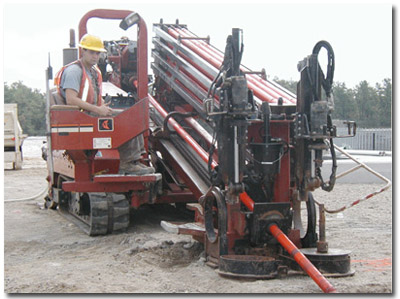The Prospects of Subterranean Engineering: Lateral Directional Drilling

As keep on to expand while the demand for infrastructure grow, the necessity of innovative construction methods becomes increasingly critical. A prominent method gaining prominence is HDD. This trenchless technology enables the installation of multiple utilities underground without requiring major surface disruption, making it a game-changer in urban and ecologically delicate projects. Comprehending how HDD works and its advantages creates a world of possibilities for streamlined utility installation and infrastructure development.
The future of underground construction is evolving by the capabilities of HDD. Through reducing the environmental footprint associated with traditional trenching methods, HDD stands at the forefront of sustainable engineering practices. As we delve into the intricacies of this technology, we'll explore its numerous applications, the machinery required, and the challenges faced by specialists in the field. From fiber-optic cables to renewable energy infrastructure, HDD is more than a method; it’s a solution that responds to the evolving needs of modern society.
Grasping Horizontal Directional Boring

Lateral Orientation Drilling, or trenchless drilling, is a trenchless technique used to set up underground infrastructures, such as hydraulic, sewer, natural gas, and fiber optic cables. The method involves boring a test hole along a designated way, which is then enlarged to house the line being installed. This technique facilitates for the placement of lines without the requirement for large-scale earthworks, greatly lessening land disruption.
The HDD process starts with the location being assessed and the boring route planned. A tiny pilot device is directed along the predefined path, and as it advances, the technician constantly locates its site using sophisticated equipment such as GPS. Once the test bore reaches the desired destination, it is reamed to the required diameter, allowing the line to be drawn through smoothly. This productive process reduces the impacts related to traditional excavation by keeping the integrity of the land and adjacent buildings.
One of the major advantages of horizontal directional drilling is its ability to navigate complex environments and urban places where conventional excavation would be impossible. It provides a minimal impact solution that is particularly valuable in fragile locations, reducing natural harm. As Find out more continues to develop, HDD is prepared to play a key part in meeting the requirements for service setup while protecting the environment and public appearance.
Benefits and Implementations of HDD
HDD provides multiple advantages that make it a popular choice for diverse subsurface construction endeavors. One of the key advantages is its capability to place utilities with minimal surface interference. This approach facilitates the deployment of pipelines, cables, and other utilities without the requirement for large-scale digging, which can lead to lower restoration costs and limited impact on existing infrastructure. Additionally, this method can navigate intricate terrains, such as urban settings and ecologically sensitive areas, rendering it an successful solution for different project needs.
The application of Horizontal Directional Drilling extends beyond traditional utilities. It plays a vital role in telecommunications projects, where the need for high-speed data transmission has expanded considerably. By enabling the placement of cables under roads, rivers, and highly populated regions, HDD enhances network reliability and minimizing disruptions to the daily lives of residents. Furthermore, the method is beneficial for water and sewer line deployments, guaranteeing that essential services stay uninterrupted during the construction period.
As the world progresses towards sustainable development, HDD's environmental advantages cannot be overlooked. The technique reduces the necessity for open trenching, leading to minimal soil erosion and habitat destruction. Moreover, its gentle approach makes it suitable for renewable energy developments, such as wind and solar installations, where environmental conservation is important. As HDD continues to evolve, its adoption in various sectors is projected to expand, establishing it as a critical part in the next of infrastructure growth.
Future Trends and Innovations in HDD
As HDD continues to evolve, tech innovations are playing a pivotal role in enhancing its efficiency and effectiveness. The integration of real-time data and monitoring systems allows professionals to gain unmatched insights into drilling conditions. This transition towards data-driven decision-making not only enhances accuracy but also reduces the likelihood of unforeseen issues during projects. Increased mechanization and the utilization of AI are also optimizing operations, leading to more efficient drilling processes that can adapt to complex environments.
The ecological advantages of HDD are becoming more pronounced as compliance increases and sustainability becomes a focus in construction. Innovations in eco-friendly drilling lubricants and improved methods for minimizing impact to surrounding natural habitats are making HDD an even more appealing option. Additionally, as urban areas grow and construction encroaches on delicate ecosystems, the need for low-impact solutions like HDD will continue to drive innovation in this field, enabling projects to proceed with minimal footprint.
Looking forward to 2025 and beyond, the demand for horizontal directional drilling in green energy projects will likely increase. As countries commit to reducing carbon emissions and transitioning to renewable energy, HDD will play a vital role in laying the necessary pipelines and connections for various renewable energy systems. Moreover, advancements in GPS technology and drone surveillance for initial project assessment and oversight will further enhance the effectiveness of HDD, setting the stage for safer and more efficient underground construction projects in the years to come.
